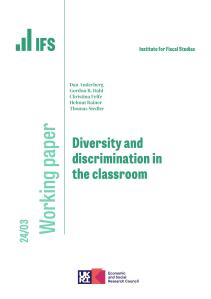<p>This article focuses on the constraints on parental choice of school caused by geographical location, which arise due to the reliance on geographical proximity as the key oversubscription criterion for allocating school places. We investigate the assumption that most families really can choose between a range of different schools, and ask what types of school are genuinely accessible to different types of pupil. Using an innovative combination of survey and administrative data, we first determine what types of school are located near different family types. We then investigate how many of these different types of school are really available to the student, based on current catchment areas of schools and the home location of the child. This enables us to assess how access is determined by geography, and how it differs both by school type and by type of family. We show that using proximity as the main criterion to determine access to most schools affects pupils' probability of securing a place at a particular school, with higher socio-economic status (SES) pupils being more likely to be accepted into (nearer) more advantaged schools. We argue that the large differences in the range of schools genuinely available to different families, coupled with the use of proximity as a tie-break device, continues to be a significant barrier to reducing inequality of access in the English school system. </p>









